Our quick drive impression of the pre-production Hyundai Alcazar reveals all you need to know about this made-for-India six- and seven-seater SUV.
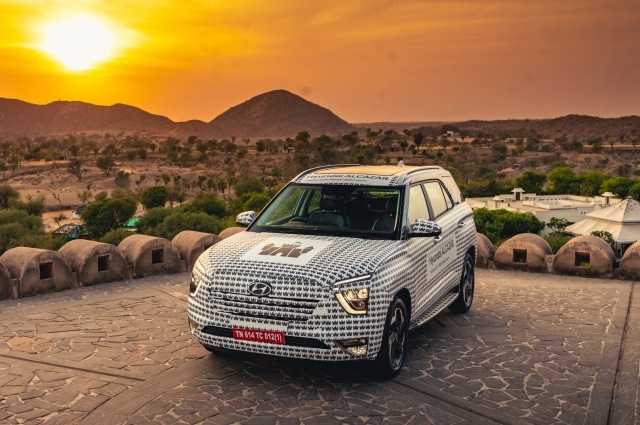
The Hyundai Alcazar Story: When Hyundai Motor India (HMI) proposed a seven-seater version of the Creta, it was met with some scepticism by the bosses at the Korean headquarters. But the Indian arm had done ample research, survey and competition-check clinics, and was certain that a premium SUV with three rows of seat, if priced well, would surely get them enough numbers and rake in some profits. It’s this keen understanding of Indian car buyer’s evolving needs that has helped Hyundai become the leaders of the SUV segment and a strong second spot in the overall car manufacturing business in our country.
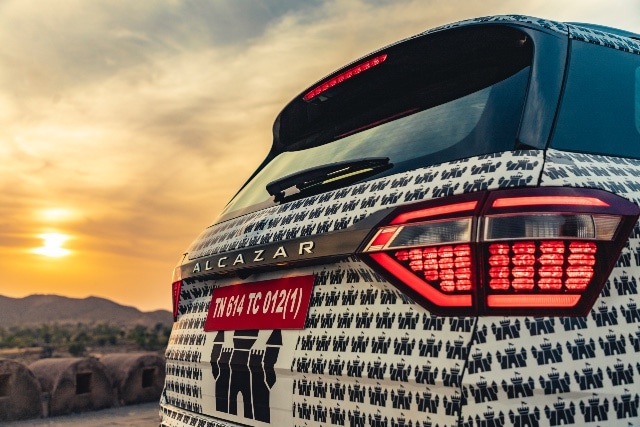
The ‘Alcazar’ Nomenclature: The biggest hurdle for Hyundai Motor India was to ensure that the seven-seater model doesn’t get overshadowed by the well-established ‘Creta’ brand. After all, their latest SUV, the Hyundai Alcazar is based on the Creta platform. This was not just a stretched Creta and this message had to be loud and clear. So, instead of naming it the usual – ‘Creta Plus’ or ‘Creta XL’, Hyundai decided to go with the name of a royal palace in Spain – Alcazar. During our interaction with the top executive of Hyundai Motor India, they revealed that the idea was to create a six- and seven-seater premium SUV that resonates with the grandeur and magnificence of palaces and castles. No wonder the company organised the exclusive media drive at the 230-year-old Alila Fort turned luxury hotel near Jaipur.
Design – On the Outside: We got our hands on the pre-production, camouflaged Hyundai Alcazar but we did get a look at the uncovered car too. The overall look is very similar to the Creta but with some tweaks to match Alcazar’s grander stance. So you get a larger cascading grille with plenty of chrome elements, silver accent running from one headlamp to the other. Interestingly, the low-set headlamp design hasn’t changed from that of the Creta but the gap, between the reprofiled DRLs and the lamps, has been reduced to make the face firm and taut. And you get a new set of fog lamps and indicators.
In profile, the larger proportions become more evident. On the Alcazar, the engineers have stretched the Creta platform by 150 mm, which has helped create room for the third row of seats. And it looks long. Yes, the 2,760 mm wheelbase is longer than competition like the Hector Plus and even the Safari, but the Hyundai isn’t as wide or tall. This means that it lacks the towering road presence of the others.
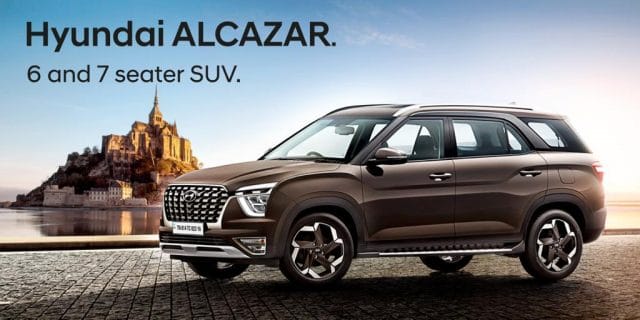
Look at it from the side and you can’t miss the steeply inclined C-pillar, longer rear doors, thick D-pillar and the prominent rear overhang. Even the roofline had to be redesigned to carve out headroom for third-row passengers. What also makes the Alcazar look more distinct is the flared wheel-arches and nice-looking large 18-inch alloys on higher variants (Creta gets 17-inch wheels). You’ll be happy to note that the Hyundai Alcazar gets disc brakes on all four wheels, which should give it greater stopping power. Then there are these smaller elements like a footboard which makes it easy to step in and out of the car, especially when entering the third row.The rear design has received plenty of changes, including a pair of new and smaller tail lamps, and the much loved edge-to-edge chrome strip. To be honest, I feel Creta has more meat than just its design, and considering that the SUV manages to sell 12,000 units every month, it just proves the point further. Going by that, Indian car buyers will continue to appreciate the well-executed styling of the longer Hyundai Alcazar which looks a touch more conventional with these design tweaks.
Getting in the cabin: The Hyundai Alcazar will be offered in six- and seven-seat options and we got a closer look at both. But as you know, these were the pre-production cars with the brown-and-black dashboard under wraps, and some of the equipment lists still have to be finalised. Hyundai has requested us not to reveal all the information about the features but we can share some of it. From the looks of it, the dashboard will be very similar to the one on the Creta with a large touchscreen and an intuitive infotainment system.
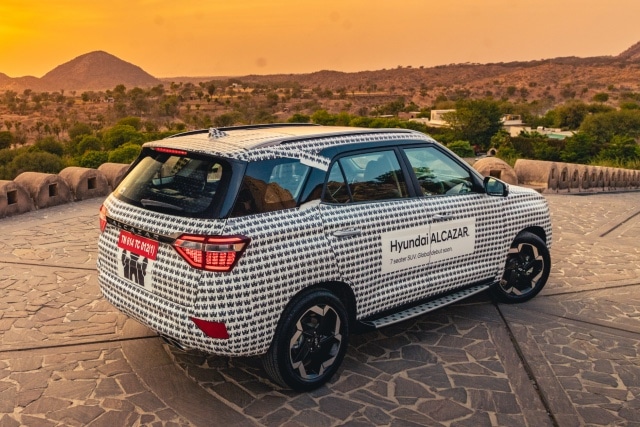
Hyundai want the Alcazar to be a more premium offering than the Creta, so the engineers have ensured that the cabin is more comfortable and luxurious than the five-seater. Obviously, the six-seater looks more premium and more comfortable too, thanks to the individual Captain seats in the second row. There’s a bench-type middle row on the seven-seater which makes it more practical if you have a larger family. There’s decent knee-room here despite the aeroplane-like tray tables and there’s more than adequate headroom. You get a one-touch tumble feature on the second row of the six- and seven-seater version, that is easy to use and makes ingress to the back seats more convenient. The middle row can also slide to make more room at the back.
Space in the third row is tight and that was expected. It’s difficult for SUV body styling to create spacious three rows of seating. That’s why MPVs exist. An average built Indian can squeeze into the Alcazar’s third row (maybe not the junk-food loving urban Indian), but it’s better suited for young adults or children. But in typical Hyundai fashion, this has been compensated with features like a dedicated a-c unit for cooling, a USB port to connect your device, a large glass area along with a panoramic sunroof so that occupants do not feel claustrophobic.
Despite the three rows, there’s a reasonable 180-litres of boot space by moving the spare wheel under the car. The luggage area can be increased substantially, as the last row of seats folds flat.
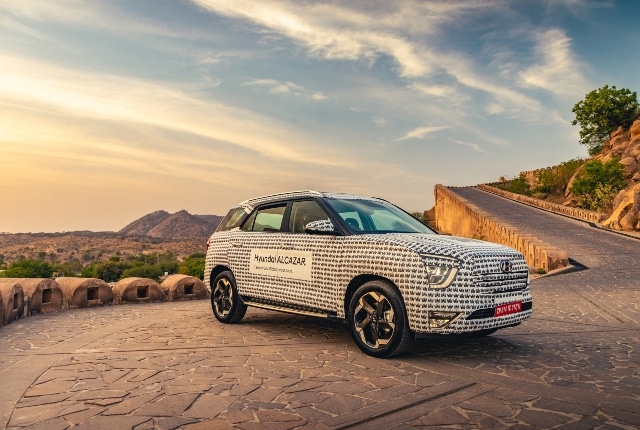
Driving and Engine Options: Since the Hyundai Alcazar is positioning above the Creta, it gets a larger 2.0-litre petrol engine which makes 159 hp and 191 Nm of torque. This is the latest version (third-gen) of the engine and makes marginally more power and slightly less torque than the second-gen unit that powers cars like the Tucson and Elantra.
We feel that the 1.5-litre turbo-diesel borrowed from the Creta would make a big chunk of sales for the Alcazar. Hyundai say that the power delivery and gear ratios of the diesel has been retuned for the bigger SUV. The oil-burner churns out 115 hp and a hefty torque of 250 Nm which will make all the difference considering the Alcaraz is larger and heavier than the Creta. Both engines are offered with a six-speed automatic or a six-speed manual. The AT version will also offer drive modes like Eco, City and Sport.
We got to drive just the naturally-aspirated 2.0-litre petrol manual version… for all of 12 minutes. Even in the short drive, the engine proved to be extremely refined and pretty spirited. The larger engine seems ideal for a car of this size and the extra pair of passengers it is expected to ferry. The light clutch action, smooth gear throw and linear power delivery make the Alcazar a hassle-free car to drive. The ample mid-range adds to the whole driving experience. Moreover, the engineers say that they have increased the final gear ratio, which should hopefully improve the fuel efficiency without hampering engine performance. Hyundai claim that the Alcazar petrol manual can sprint from 0–100 km/h in sub-10 seconds, which is pretty decent. We need to drive the Hyundai Alcazar a little more to give a more definitive verdict on that.
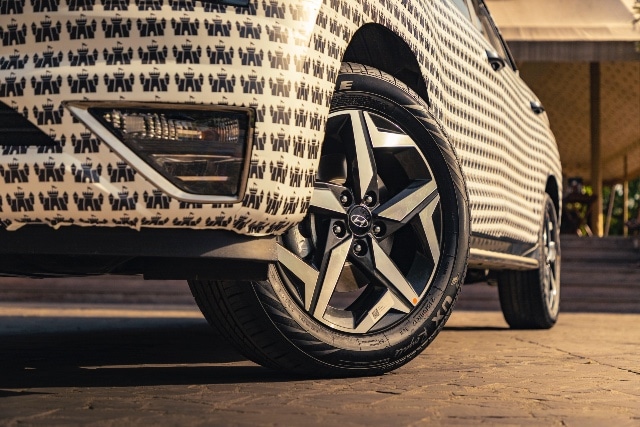
Ride and Comfort: The route plan for this short drive had some narrow village roads, patches of broken roads and some well-paved tarmac. The Alcazar offered a more plush ride than the Creta, which is saying something. The new hydraulic bump stops not just offer a comfortable ride for the entire family but also makes the Alcazar feel taut to drive. It sails over broken roads and manages speed-bumps with poise. The suspension has been retuned to ensure that it can take the load of the entire family and their luggage, and yet offer a supple ride. Again, we’ll need to drive the Alcazar some more, and with a full house, to affirm this.
What surprised us was that even though it is longer and heavier, this large SUV handles pretty well. While driving it doesn’t feel as big or heavy, but for obvious reasons, it isn’t as nimble as its five-seater sibling. It takes on fast corners confidently, and even while changing lanes or braking hard it doesn’t feel like a handful and stays fairly composed. The Alcazar is more like a comfortable-tourer so shouldn’t be driven to the limit. It’s designed to ferry your family and friends in comfort, which it does pretty effortlessly.

Price and Launch Date: Like the Tata Harrier and Safari, or the MG Hector and Hector Plus, we expect the Alcazar to be about Rs 1.25 lakh more expensive than Creta, variant to variant. Official prices should be announced in the first week of May.




















Leave a Reply